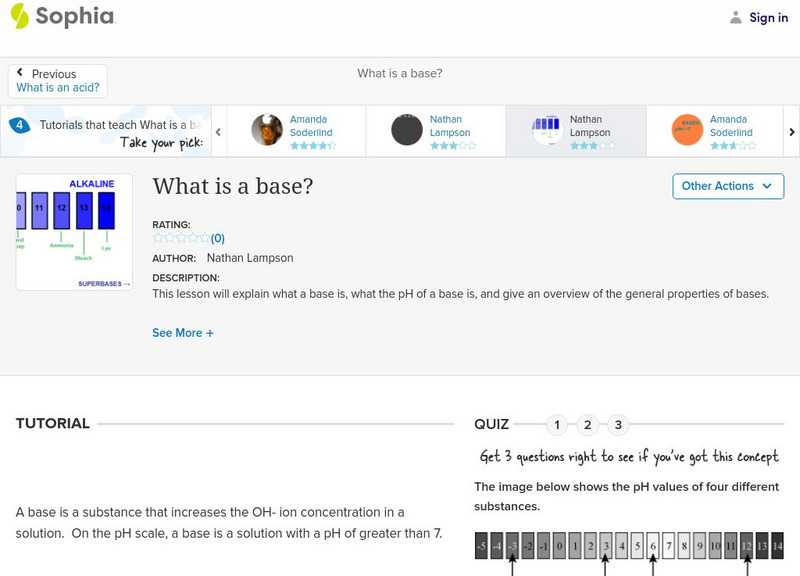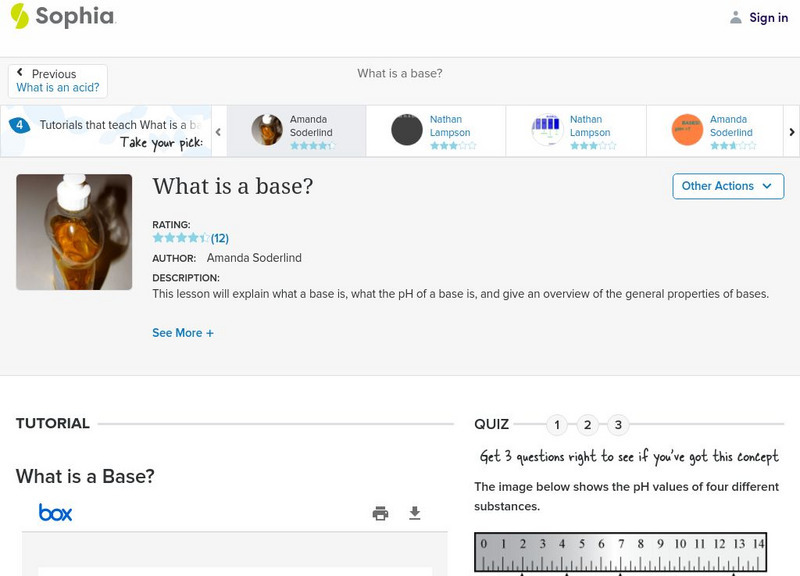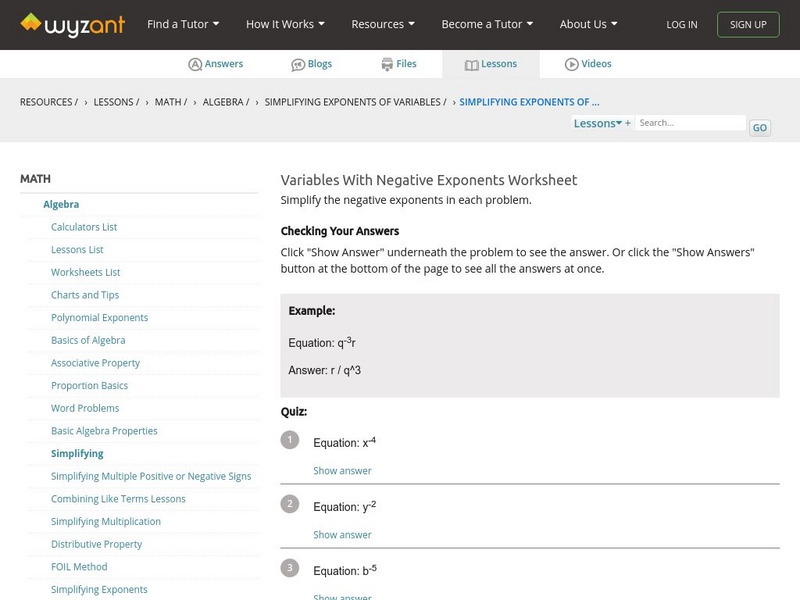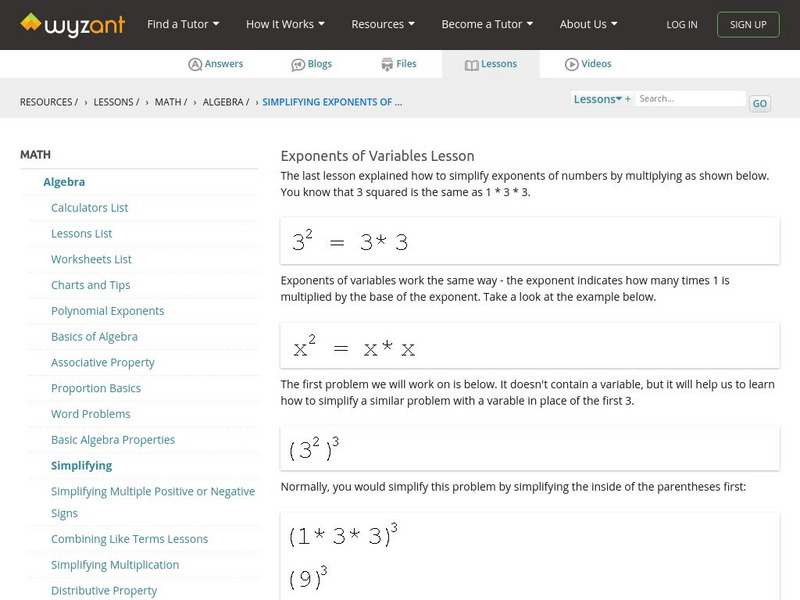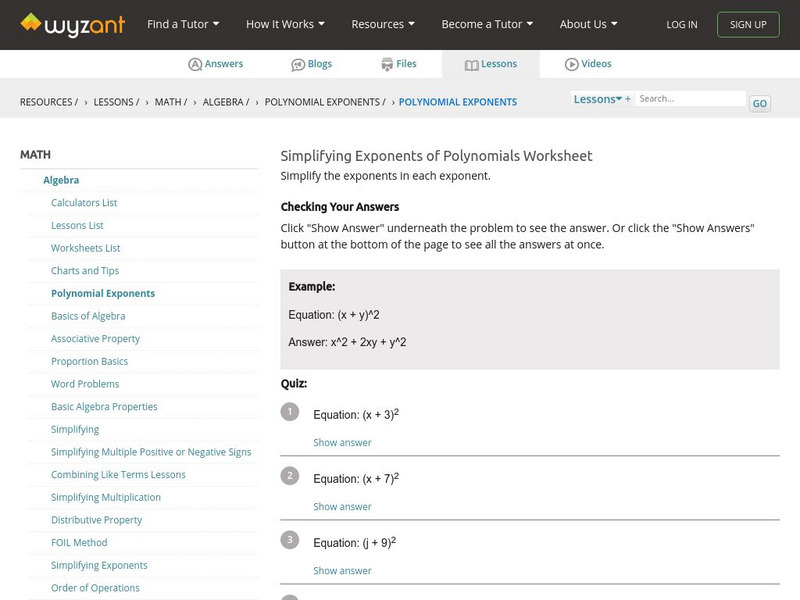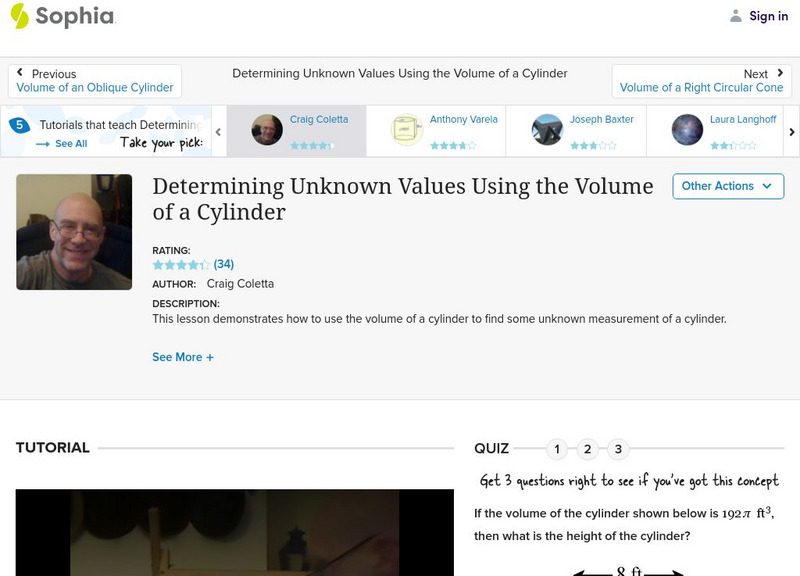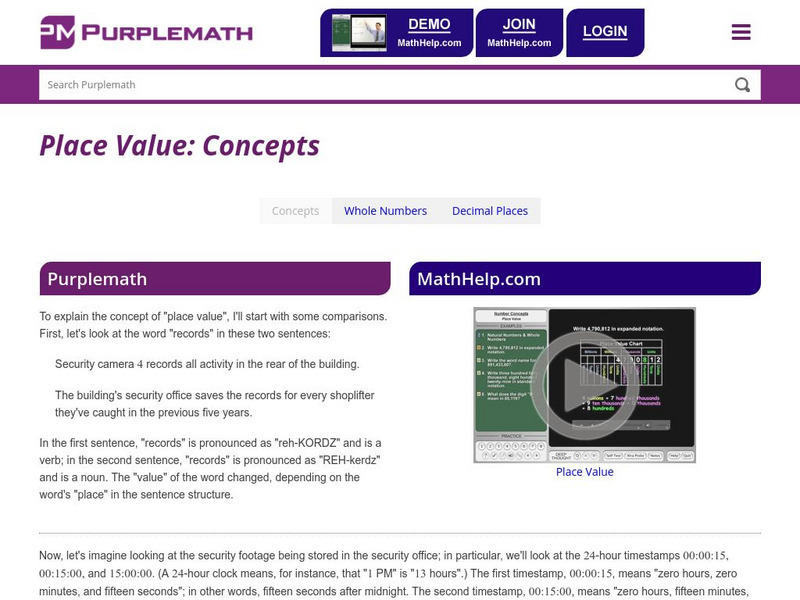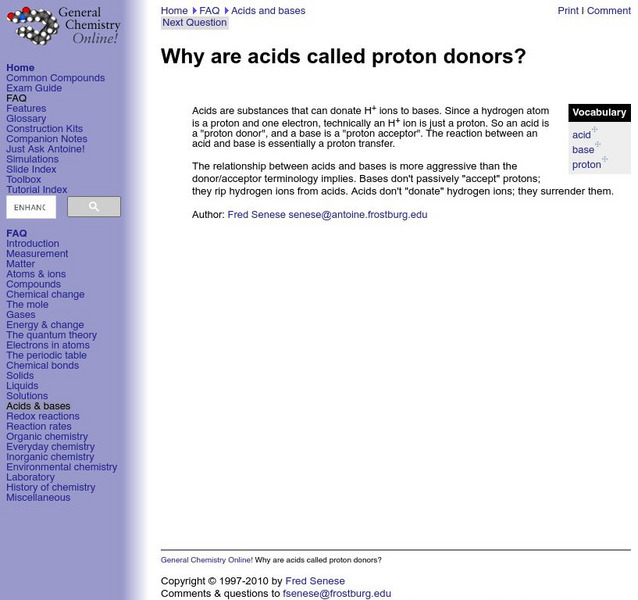Sophia Learning
Sophia: What Is a Base?: Lesson 3
This lesson will explain what a base is, what the pH of a base is, and give an overview of the general properties of bases. It is 3 of 4 in the series titled "What is a base?"
Sophia Learning
Sophia: What Is a Base?: Lesson 4
This lesson will explain what a base is, what the pH of a base is, and give an overview of the general properties of bases. It is 4 of 4 in the series titled "What is a base?"
Sophia Learning
Sophia: What Is an Acid?: Lesson 3
This lesson will explain what an acid is, what the pH of an acid is, and give an overview of the general properties of acids. It is 3 of 4 in the series titled "What is an acid?"
Sophia Learning
Sophia: What Is P H?: Lesson 2
This lesson will explain what pH means, and the difference between substances with a high pH vs a low pH. It is 2 of 4 in the series titled "What is pH?."
Wyzant
Wyzant: Exponents of Variables Worksheet
After completing the 20 questions on the inter-active quiz, the students can have the site from WyzAnt check their answers for them. The questions presented all involve a monomial in parenthesis raised to a number exponent. The student...
Wyzant
Wyzant: Exponents of Variables
The jump from exponents on number bases to exponents on variable bases is made here at WyzAnt by first reviewing the former. Then, examples are provided of the latter. A nice "conversational" approach to presenting the material is taken...
Other
Aus E Tute: Acid Base Titration Curves
This website has a table which gives the typical titration curves for different combinations of acids and bases (i.e., strong/weak, strong/strong, weak/weak, etc.) Also contains an in-depth example problem in which a titration curve is...
Wyzant
Wyzant: Exponents of Polynomials Worksheet
Twenty practice problems are presented where polynomials (mostly binomials) in parenthesis are raised to number exponents. Each of the questions has a step-by-step solution for the student to see after completing the work on their own....
ClassFlow
Class Flow: Volume of Cylinders
[Free Registration/Login Required] This flipchart guides the students through the process of determining the volume of a cylinder. Students learn to transform formulas in order to find the missing elements.
ClassFlow
Class Flow: Acid Base Titration
[Free Registration/Login Required] Determination of the Molarity of an Acid or Base Solution.
ClassFlow
Class Flow: Exponent Basics
[Free Registration/Login Required] Explore basic exponential skills. Go for it in this flipchart intended for grades 6-8.
ClassFlow
Class Flow: Grade or No Grade
[Free Registration/Login Required] This is a game format activity based on the TV game Deal or No Deal. The game is Grade or No Grade. Students answer a series of questions on Chemistry topics of Acids, Bases and Solutions.
Sophia Learning
Sophia: Calculating the Surface Area of Pyramids
Surface area of pyramids is explored in this video resource. The lesson includes three detailed examples using a square, hexagonal, and triangular pyramid.
Sophia Learning
Sophia: Common Words With Multiple Meanings
This lesson introduces common words with multiple meanings.
Sophia Learning
Sophia: Determining Unknown Values Using the Volume of a Cylinder
This video lesson demonstrates how to work backward and use the volume of a cylinder to find an unknown value such as the radius or height. Students can check their understanding with an assessment. [4:41]
ClassFlow
Class Flow: Three Dimensional Figures
[Free Registration/Login Required] This flipchart describes the characteristics of polyhedrons and asks students to classify figures according to the number of vertices, faces, and bases of the figures.
University of Georgia
University of Georgia: Inter Math: Base (Of a Polygon)
This site provides information about the base(s) of polygons. The site discusses which sides are typically considered bases for triangles and trapezoids. There are links to related terms, more information, and the interactive check point...
Purple Math
Purplemath: Place Value: Concepts
Explains and illustrates the thinking behind the concept of place value.
Purple Math
Purplemath: Geometry Word Problems: Introduction
Introduces how to set up and solve simple geometric-figure word problems. Includes advice regarding formulas to memorize.
Frostburg State University
General Chemistry Online!: Why Are Acids Called Proton Donors?
This page provides a concise explanation of why acids are called proton donors.
Frostburg State University
Frostburg State General Chemistry Online: Electrolytes
These are slides eight through ten of a set of slides about Chemical reaction in solution. These slides discuss strong and weak electrolytes, acids, bases, and salts.
Ducksters
Ducksters: Baseball: Learn All About the Sport Baseball
Find out about baseball player positions, rules, terms, and strategy of the game on this webpage.
John Wiley & Sons
Wiley: Dissociation of Strong and Weak Electrolytes
This page has animated 3-D graphics that illustrate the dissociation of strong and weak electrolytes.
John Wiley & Sons
Wiley Higher Education: Strong Acid & Base Dissociation
This page has animated, 3-D graphics that illustrate the dissociation of strong acids and strong bases and the formation of aqueous solutions.


